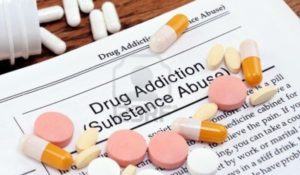 As 2016 wound to a close, the Centers for Disease Control and Prevention (CDC) made new data about 2015 opioid deaths available to the public, data that clearly demonstrates the ongoing epidemic nature of the addiction. The National Center for Health Statistics reports the number of deaths involving prescription or illegal opioids in 2015 as more than 33,000 as compared to over 28,000 in 2014.
As 2016 wound to a close, the Centers for Disease Control and Prevention (CDC) made new data about 2015 opioid deaths available to the public, data that clearly demonstrates the ongoing epidemic nature of the addiction. The National Center for Health Statistics reports the number of deaths involving prescription or illegal opioids in 2015 as more than 33,000 as compared to over 28,000 in 2014.
CDC Director Tom Frieden, M.D., M.P.H had this to say last month: “The epidemic of deaths involving opioids continues to worsen. Prescription opioid misuse and use of heroin and illicitly manufactured fentanyl are intertwined and deeply troubling problems. We need to drastically improve both the treatment of pain and the treatment of opioid use disorders and increase the use of naloxone to reverse opioid overdose. We must also work collaboratively with our public safety partners to further reduce access to illicit opioids.”
Are attempts to curb prescription abuse in the early stages of paying off?
However, if there is any modicum of hope embedded in the latest statistics, it might be seen in the fact that overdoses specifically involving prescription opioids saw only a slight increase (from nearly 17,000 to around 17,500—4%), which may indicate that various attempts to combat the abuse of prescribed opioids are having some positive effect. Still, in light of increased deaths overall, it may provide little solace to families ravaged by addiction.
Michael Botticelli is the Director of National Drug Control Policy. “The prescription opioid and heroin epidemic continues to devastate communities and families across the country—in large part because too many people still do not get effective substance use disorder treatment,” he said. “That is why the President has called since February {of 2016} for $1 billion in new funding to expand access to treatment. This week {the week of December 5th, 2016} Congress finally acted on the President’s request. The Administration will work to get this new funding out to States as quickly as possible to make sure that every American who wants treatment for an opioid use disorder is able to get it.”
(The 21st Century Cures Act that Botticelli referenced includes $1 billion in funding earmarked for fighting the nation’s opioid epidemic, in large part by expanding availability to treatment for individuals struggling with substance use disorder.)
Abuse of synthetic opioids accounts for highest ratio of increase in fatalities
In terms of the statistics, the largest jump (more than 70%) comes in the category of synthetic (non-methadone) opioids. Those overdose deaths went from over 5,000 in 2014 to over 9,000 a year later. This drug classification includes the synthetic opioid fentanyl (and the data shows that the deaths in this category involve illegally manufactured fentanyl, not legal medications that contain the substance).
Overdose fatalities attributed to heroin totaled around 10,000 in 2014 and nearly 13,000 in 2015 (a 23% increase).
Looking ahead: some of the government’s measures to combat the epidemic
Despite the sobering statistics, it’s worth noting that, in addition to the Cures Act, 2016 ushered in some pro-treatment measures (that of course won’t be reflected in 2015 data), measures that might result in an improved retrospective picture at this time next year.
For instance, federal funding was boosted to almost $100 million in order to strengthen prescribing protocols for opioid medications, heighten surveillance efforts at the state level, create medication-assisted treatment (MAT) that addresses the epidemic, and expand accessibility to the opioid-blocker naloxone.
Also, the CDC released its Guideline for Prescribing Opioids for Chronic Pain (the first guidance document of its kind), which includes prescribing recommendations for physicians. Over 50 pharmacy schools, 60 medical schools, and close to 200 nursing schools have since made prescriber training part of their curricula.
Additionally, the government has bolstered measures to thwart the entry of illicit fentanyl into the country.
For more information/questions regarding any legal matters, please email [email protected] or call 310.203.2800.